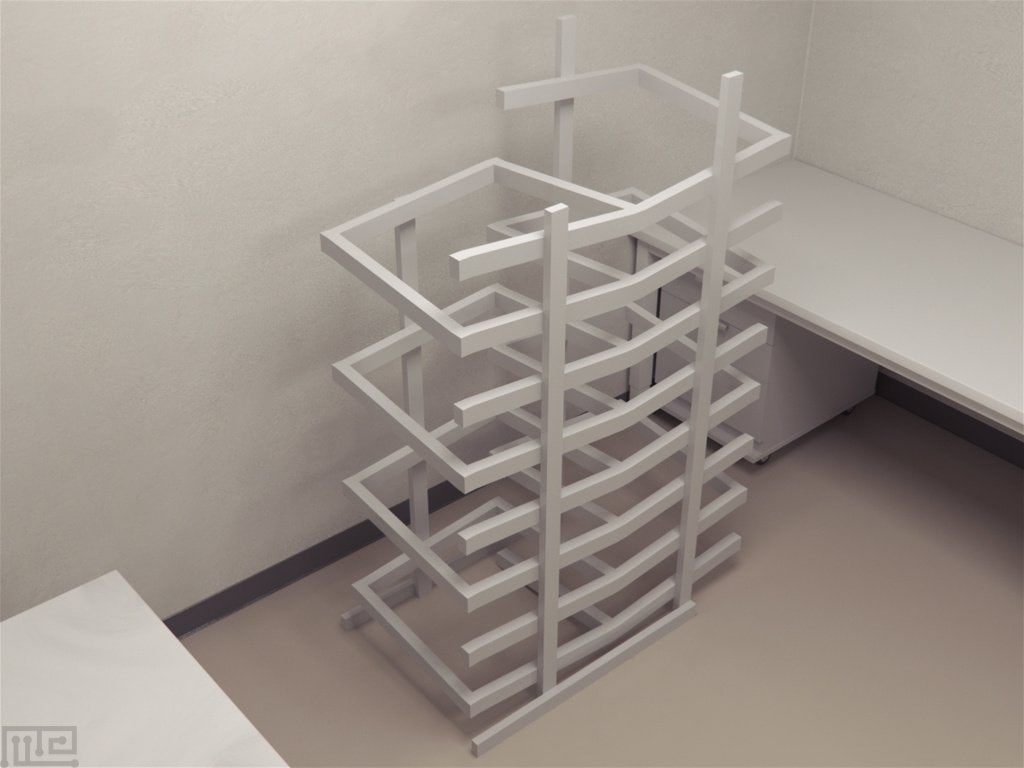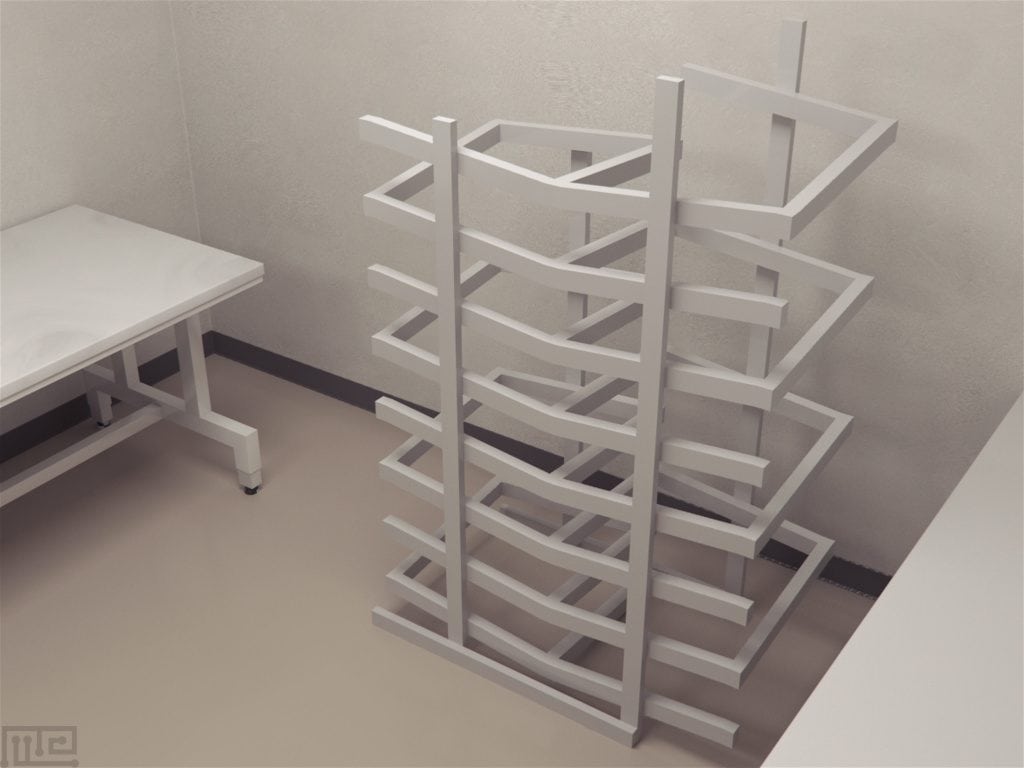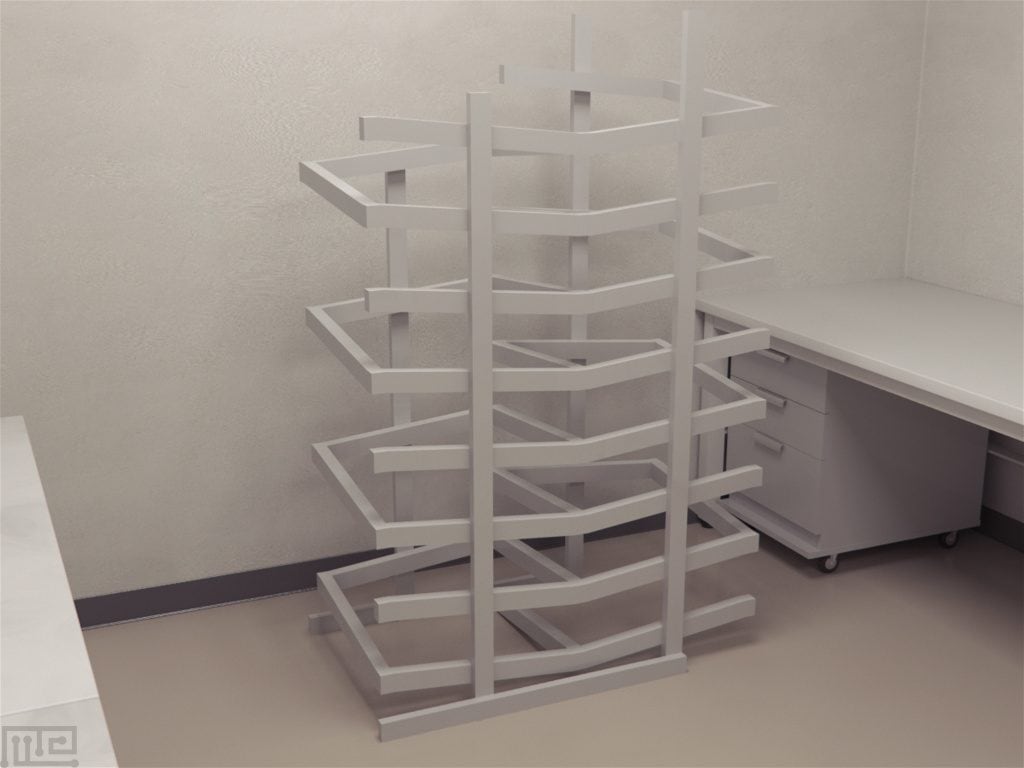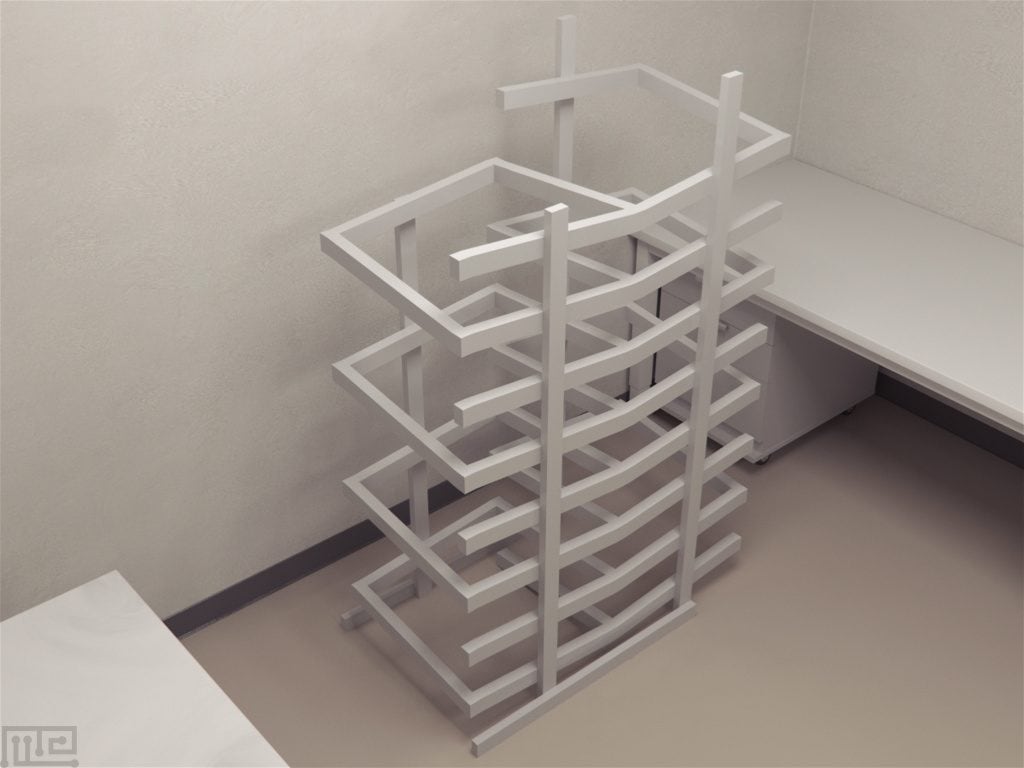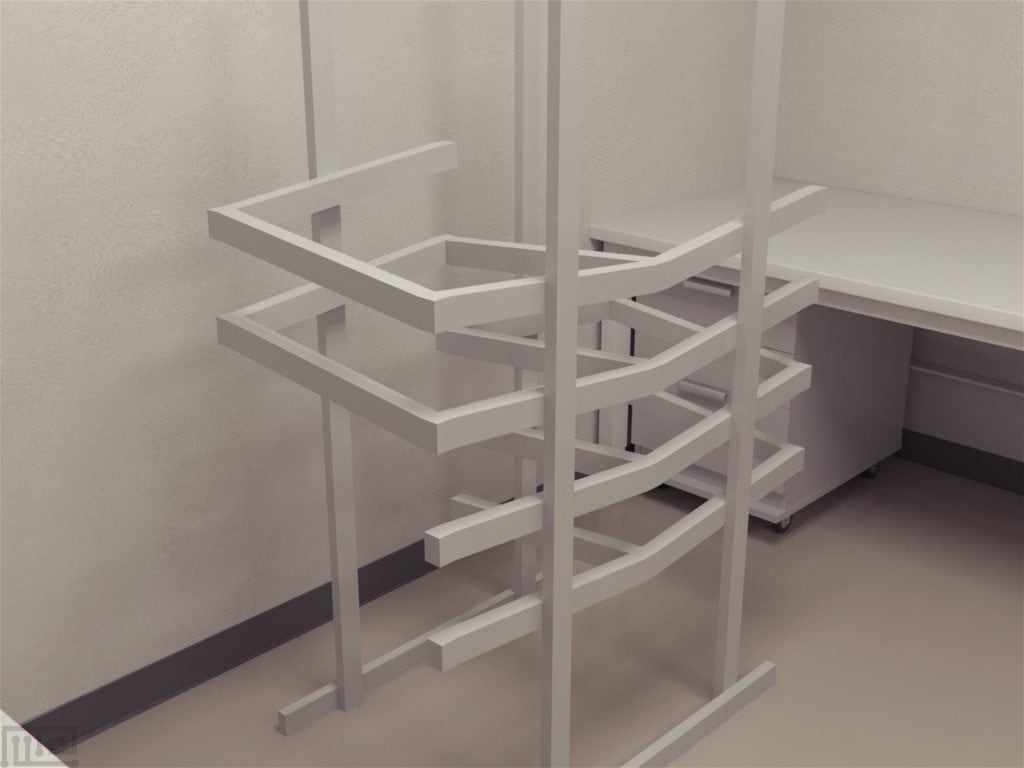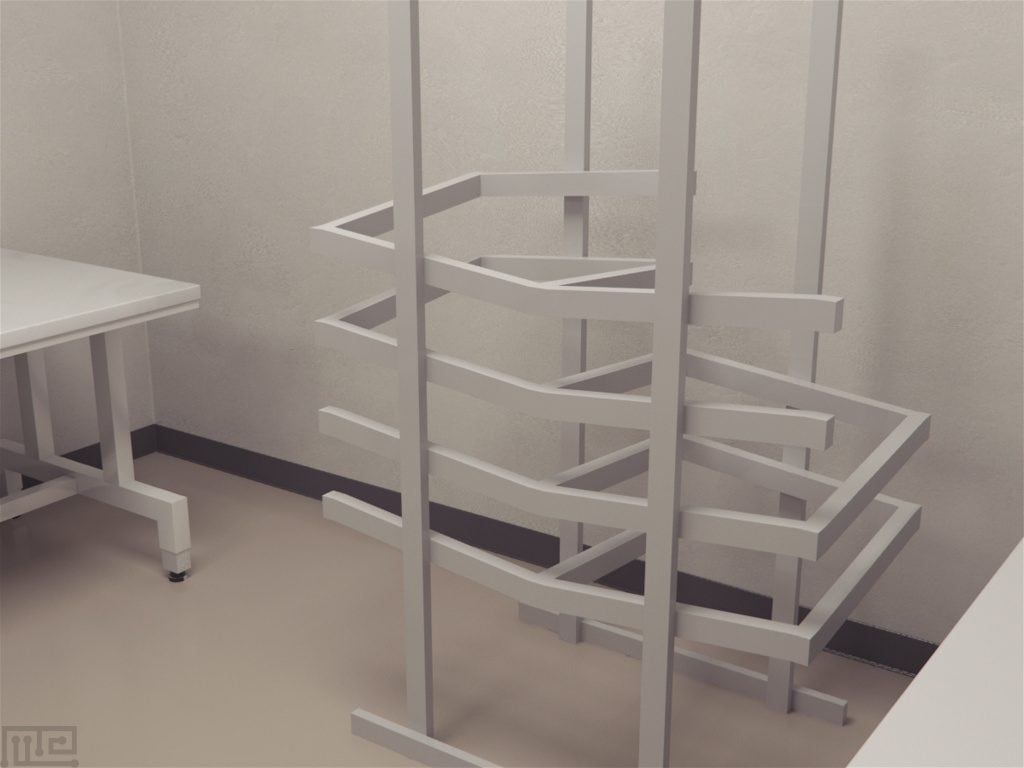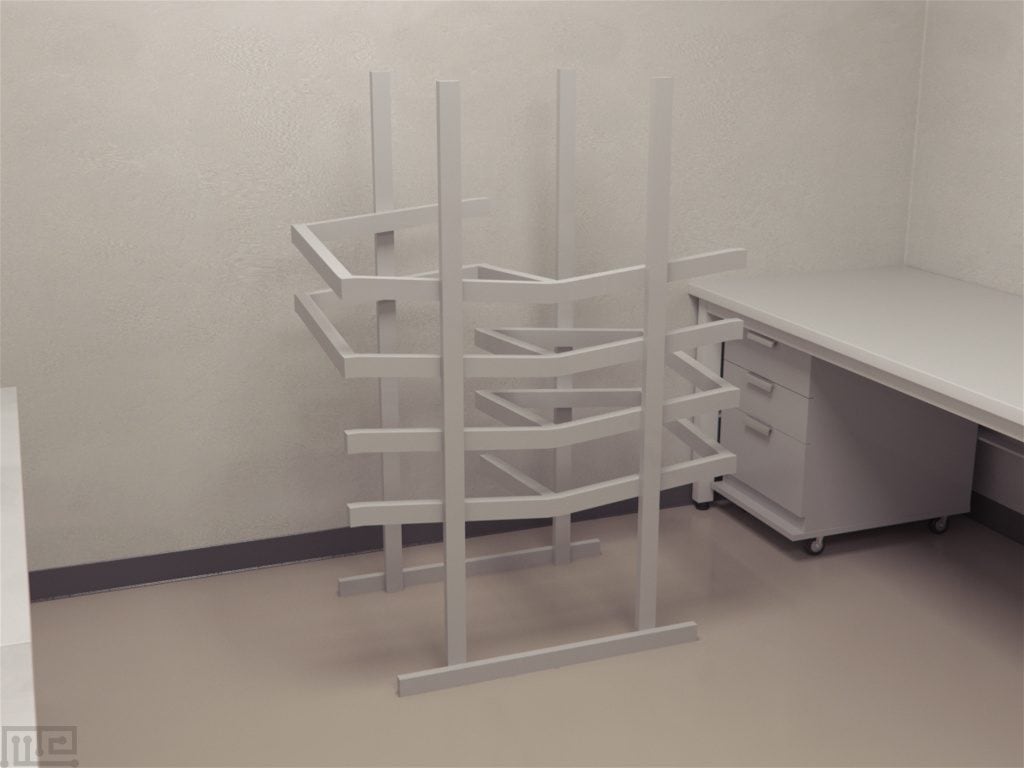

Description
Walter S Hunter’s (1929) classic double alternation spatial maze, in which the true path lies in two dimensions, can be mastered by rats. Essential cues either came from the environment of the maze or from some neural engram or trace left by the stimuli from each unit of the maze.
In this page we show both the simple alternation and a double alternation tridimensional maze, respectively.
In these mazes, the exits are directly above the entrances. Furthermore, as the rat runs from the entrance to exit, he passes through a cross-section rather than through a longitudinal section of the environment. If directional stimuli are to function, they must be to some degree vertical.
The tridimensional maze is like the bidimensional maze in that the correct pathway leads constantly into new portions both of the maze and the environment.

